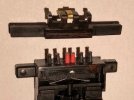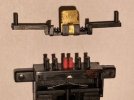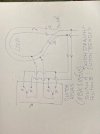duncan1_9_8_4
Garden Railway Operator
Afternoon....
I have 3 Massoth Reverse Loop Modules that have worked fine for years. Gradually, one of them has started playing up. When a train passes over the Insulating Joints, it pauses then continues as it should. But it never used to pause the train. It's as if the module is not making the switch over quickly enough. I have uninstalled it and reinstalled it as if it was new, the problem persists. I have moved it to another Reverse Loop and it transfers the fault. I have moved a good one from elsewhere and all is fine. Indicateing it's something to do with the actual module.
Whilst I don't mind buying a new, is there a reason this might have happened and why?
The module was/is dry in a sealed box, and was fine until about 2 weeks ago.
Am I just unlucky and it's simply broken?
Any ideas welcome.
Thanks
I have 3 Massoth Reverse Loop Modules that have worked fine for years. Gradually, one of them has started playing up. When a train passes over the Insulating Joints, it pauses then continues as it should. But it never used to pause the train. It's as if the module is not making the switch over quickly enough. I have uninstalled it and reinstalled it as if it was new, the problem persists. I have moved it to another Reverse Loop and it transfers the fault. I have moved a good one from elsewhere and all is fine. Indicateing it's something to do with the actual module.
Whilst I don't mind buying a new, is there a reason this might have happened and why?
The module was/is dry in a sealed box, and was fine until about 2 weeks ago.
Am I just unlucky and it's simply broken?
Any ideas welcome.
Thanks








